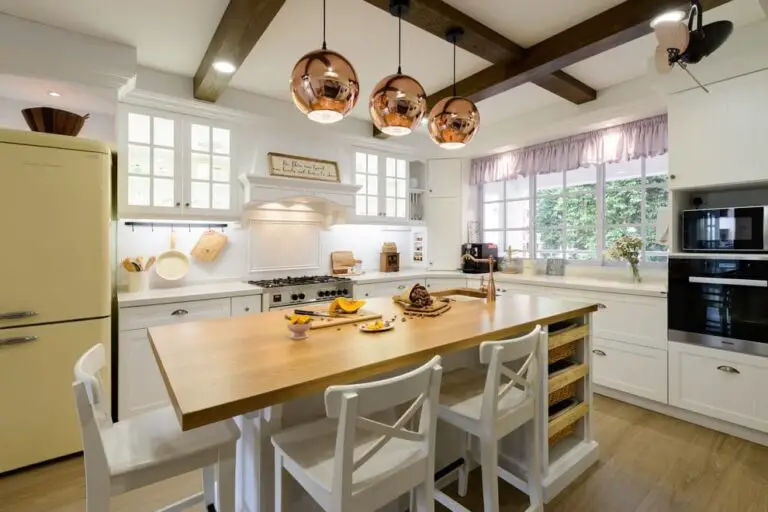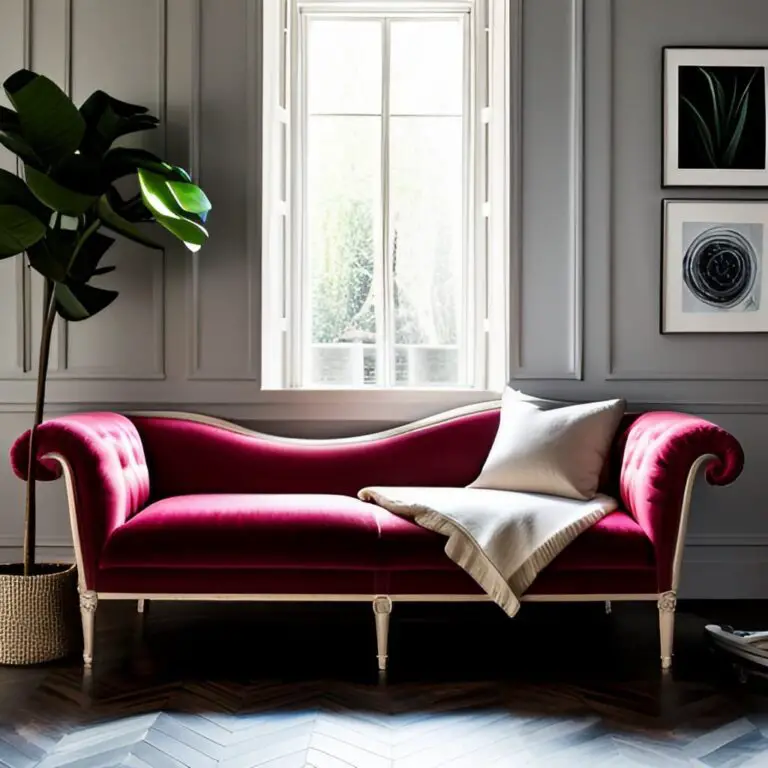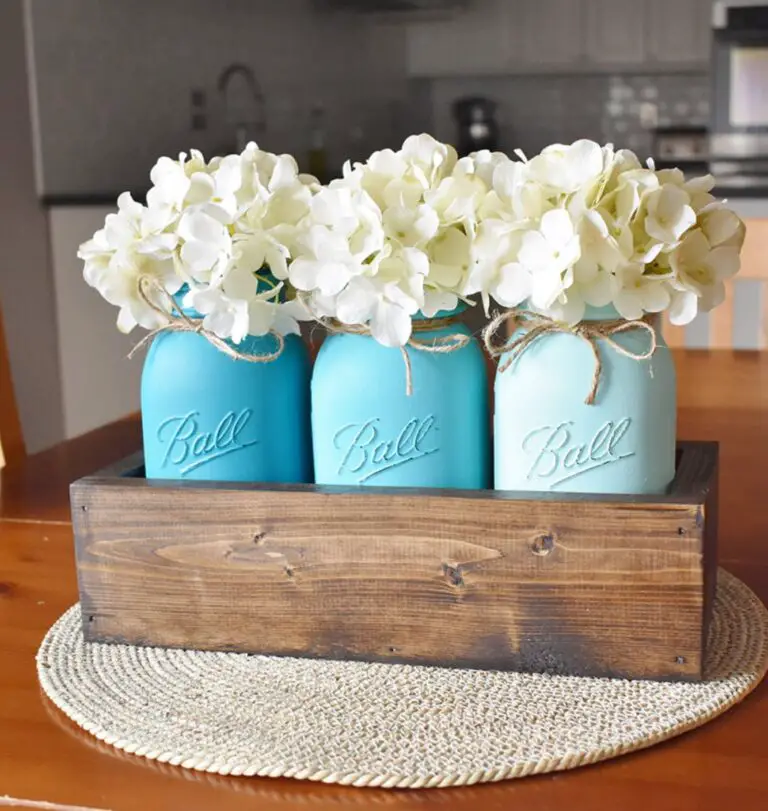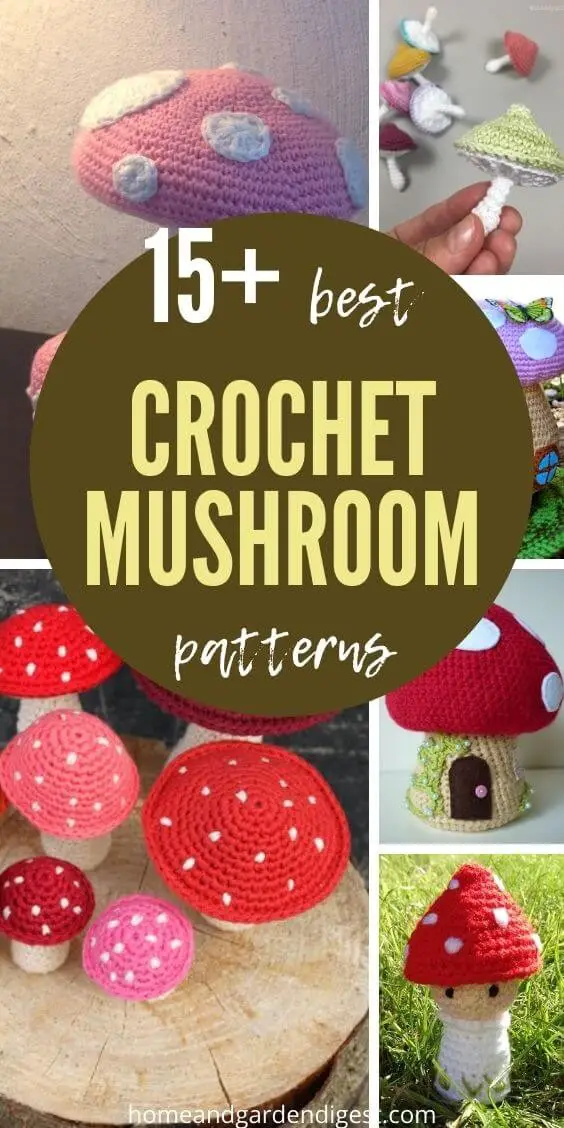16+ Different Types Of Flooring With Pictures (Kitchen, Bathroom, Living Room,)
Choosing the perfect flooring for your home can be overwhelming, especially when considering the multitude of options available. Beyond the sheer variety of choices, you’ll need to factor in maintenance requirements, installation costs, material types, and other pros and cons. Additionally, it’s crucial to determine which type of flooring is most suitable for each room in your house. If you already have a specific design or color in mind, you’re off to a great start.
However, if not, this article will guide you through the most common types of flooring, highlighting their essential characteristics to aid in making an informed decision.
Types of flooring
With numerous options to consider, it’s challenging to narrow down the most prevalent flooring types. To provide a comprehensive overview, we’ve compiled a list of the most common flooring choices. In addition, we’ve included an unbiased assessment of each type’s pros and cons to help inform your decision-making process.
Hardwood

Hardwood flooring, a timeless choice in American homes, presents a unique set of characteristics. Typically available in strips or planks crafted from maple, oak, and even purpleheart, the decision between unfinished and finished hardwood is often a challenging one. Unfinished hardwood requires sanding post-installation, while finished hardwood necessitates sealing.
Although visually appealing, hardwood floors can be demanding to maintain, prone to damage in humid environments, and require more effort to install – all of which contribute to their generally higher cost. Furthermore, concerns surrounding the sustainability of wood sources are an inherent consideration. Despite these challenges, hardwood flooring offers several benefits. Its durability and longevity ensure it remains a valuable asset, while scratched surfaces can be refurbished with ease.
Additionally, hardwood floors can significantly boost a home’s real estate value and are relatively simple to clean. However, high-traffic areas may necessitate more frequent refinishing, the supply of wood is not entirely sustainable, and exposure to moisture can cause the flooring to swell or shrink – all of which must be carefully considered.
Engineered Wood

Engineered wood flooring, often mimicking the appearance of solid hardwood or hardwood floorings, boasts a distinct difference – a plywood base. The top layer is treated with a glossy veneer to accentuate the visible wood grains, giving it a hardwood-like aesthetic. While considered more durable than its hardwood counterparts at an affordable price point, engineered wood flooring can be obtained in strips, planks, or tiles to create a floating effect.
Installation options include gluing or nailing into the subfloor or under a cork or foam underlayment. Prices for this type of flooring typically range from $4 to $15, making it an attractive option due to its relatively low installation costs. The benefits of engineered wood flooring include its resemblance to hardwood at a lower price point, reduced sensitivity to moisture and temperature fluctuations, and the ability to be installed directly onto the subfloor.
However, it’s important to note that this type of flooring can only be refinished once, and requires relatively high maintenance.
Bamboo

Bamboo flooring offers a unique combination of sustainability, affordability, and aesthetic appeal. Available in strips, planks, and tiles, this type of flooring is an attractive alternative to traditional hardwoods. The three main types of bamboo flooring – flat-grain, vertical grain, and end-grain – each feature distinct grain patterns, with the flat-grain variety boasting darker grains and the vertical grain showcasing long, narrow grains.
End-grain bamboo, meanwhile, sports shorter, narrower grains. Like engineered wood, bamboo flooring is sturdy, budget-friendly, and relatively easy to install, making it an appealing choice for many homeowners. Plus, its greater moisture resistance sets it apart from traditional hardwoods. The cost of bamboo flooring starts at around $5 per square foot, not including installation costs.
While there are some drawbacks to consider, the benefits of bamboo flooring make it a compelling option for those looking to add warmth and character to their living spaces. Pros include ease of installation, a sustainable source, greater moisture tolerance, visual appeal, and low maintenance requirements – making it suitable for bedrooms, hallways, and living rooms.
Cons include varying durability depending on the type, potential cracking or swelling in humid environments, susceptibility to dents and scratches, and limited suitability as kitchen flooring.
Laminate

While laminate flooring may not be the most luxurious option, it’s undoubtedly one of the most popular types of cheap flooring materials. This is due in part to its remarkable versatility, with a wide range of styles and designs that can mimic the look of hardwood, stone, or other flooring types – all at an affordable price. Laminate flooring is often used in kitchens, where its ease of cleaning and resistance to stains are major advantages.
The resin surface of laminate flooring makes it an attractive option for those on a budget, as it’s generally stain-free and easy to maintain. However, one important consideration is that the seams between individual planks or tiles may not be waterproof – although specialized waterproof laminate sheets or tiles can withstand minor water spills for up to 24 hours. At a cost of just $0.50 to $3 per square foot, laminate flooring is an accessible option for many homeowners.
Acacia
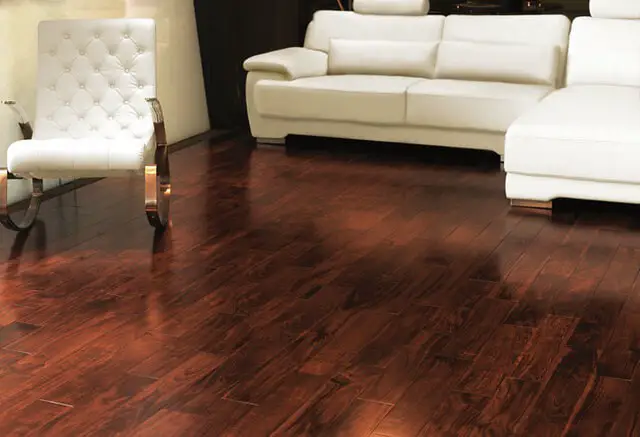
Acacia is a gem of a hardwood flooring option that often goes underappreciated. With a higher hardiness rating than popular choices like maple and oak, it’s less susceptible to wear and tear. Additionally, it’s remarkably resistant to dents and scratches, making it an excellent choice for busy households. One of its most notable advantages is its natural protective coating, which makes it impervious to swelling and humidity.
Moreover, acacia flooring is naturally waterproof and pest-resistant, reducing the need for special cleaning solutions or pest control measures. Its visual appeal is also a major draw, featuring rich brown hues that add warmth and character to any room. While it does have some drawbacks, such as being more expensive than other hardwoods and only coming in limited plank sizes, its numerous benefits make it an attractive option for those seeking a durable and low-maintenance flooring solution.
Carpet
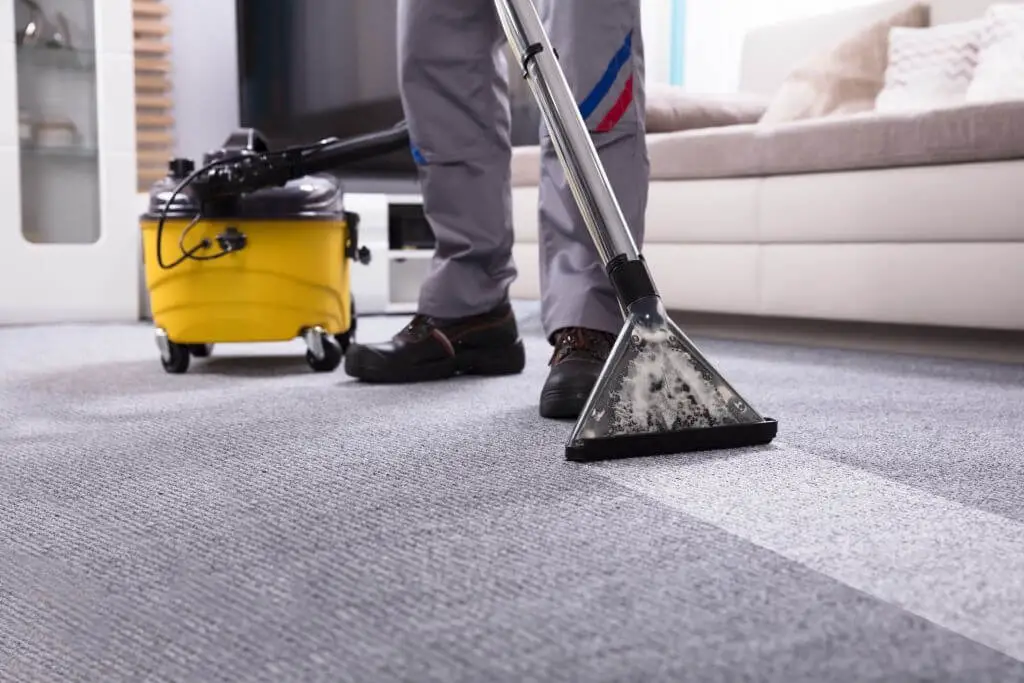
The living room and bedrooms are where carpets truly shine. The various materials used to create these floor coverings include nylon, wool, polyester, acrylic, and polypropylene, which are then attached to a cushioned padding. Wall-to-wall installations are common, with the carpet paddings nailed directly onto the subfloor. What sets carpets apart is their versatility – they come in an array of materials, designs, and patterns, making them a durable and practical choice for flooring.
A general rule of thumb is that thicker, heavier carpets tend to be more expensive but also more durable. Carpets offer the warmth and comfort needed on any day, making them a top consideration for many homeowners. One of the primary advantages of carpets is their slip-resistance, dent- and scratch-free surfaces, which provide warmth underfoot. Installation is generally easy, and the overall noise level is reduced due to the carpet’s sound-absorbing properties.
Additionally, carpets are often priced reasonably. However, it’s essential to acknowledge some potential drawbacks. Carpets can be prone to stains and may require regular vacuuming to maintain their appearance. Furthermore, they can harbor dirt and dust, leading to allergies and other health issues if not properly cleaned and maintained. Despite these cons, carpets remain a popular choice for many homeowners due to their unique benefits.
Cork

While categorized as an affordable option, this cork flooring material falls into the higher end of the budget-friendly spectrum. Its unique selling points include its visual appeal and ease of installation. One of its most significant advantages is that it provides superior cushioning for your feet, eliminating the need for additional underlayment to achieve a softer surface. Unlike vinyl options, it’s available in sheets, floating tile, or planks, with prices starting at $3 per square foot.
High-end cork floorings begin at $5. As an added bonus, this material is waterproof, easy to wipe clean, and generally low-maintenance. The trade-offs include reduced durability compared to ceramic tile, making it less suitable for high-traffic areas or homes with pets or active children.
IPE
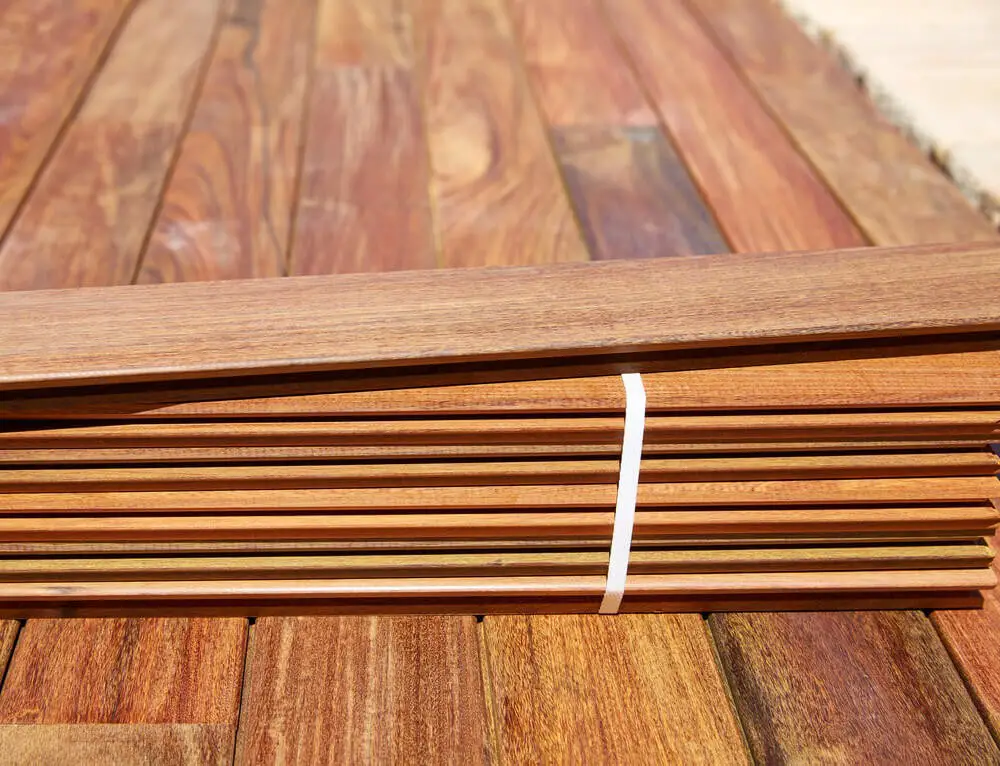
IPE, also known as Brazilian Walnut flooring, is a highly sought-after option due to its exceptional density and longevity. Its impressive fire rating of A makes it an attractive choice for those seeking a safe and durable flooring solution. This wood flooring is remarkably resistant to pests, rot, scratches, and dents, making it an ideal selection for high-traffic areas or spaces prone to moisture. Many IPE floorings come pre-finished, with some engineered options available as well.
Its natural adaptability to moist environments means it won’t buckle or warp in humid conditions, a significant advantage over other flooring types. Additionally, the need to refinish IPE flooring is less frequent, allowing homeowners to allocate their budget more effectively. While it’s true that IPE can be an expensive option, with planks starting at $5 each plus labor costs, its long lifespan of 30 years makes it a worthwhile investment for many.
The benefits of IPE flooring include its pest and fire resistance, natural adaptability to moisture, lack of cracking in heat, and exceptional durability. However, some drawbacks to consider are the higher upfront cost, inability to install DIY, and tendency for the color to show dirt more prominently.
Linoleum
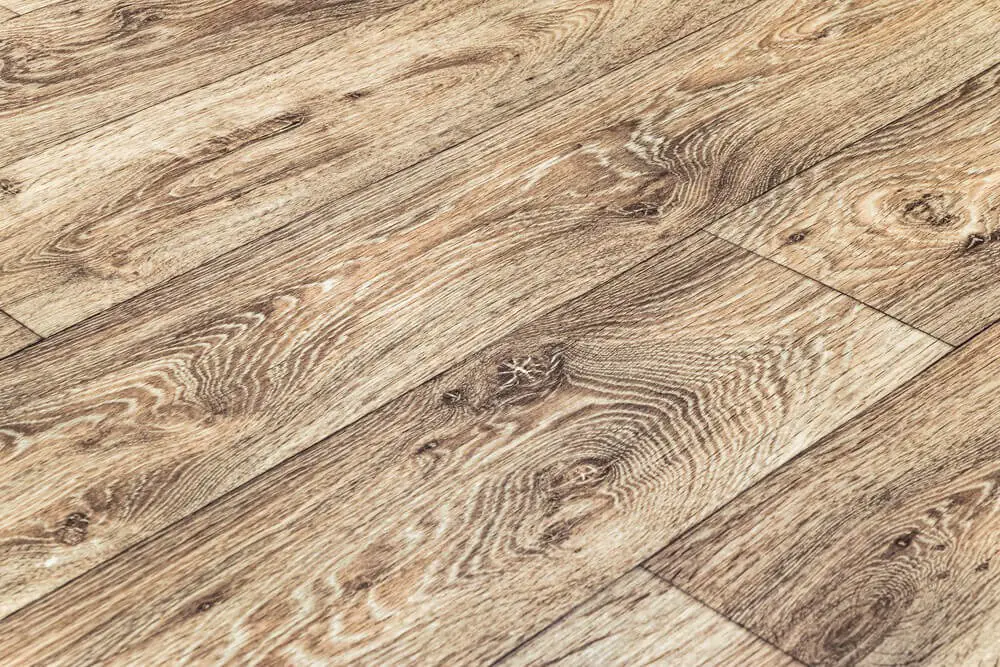
Linoleum flooring has a rich history dating back to the late 1800s. Its unique composition of cork powder and linseed oil gives it a distinctive character. Available in laminated planks, sheets, and tiles, it’s often treated with a protective coating to withstand heavy use. This type of flooring excels in high-traffic areas like kitchens and living rooms. The benefits don’t stop there – installation is relatively straightforward, the cost is affordable, and cleaning is a breeze.
Moreover, linoleum floors tend to have a soft, cushioned feel that’s gentle on the feet. However, some variations may require annual refinishing to maintain their appearance. When properly cared for, linoleum flooring can last up to 40 years, making it an excellent choice for bedrooms, family dens, and even basements.
On the plus side, linoleum floors have a convincing wood-like appearance, are easy to maintain, provide a soft walking surface, boast impressive durability, and resist scratches better than vinyl. The cost-effectiveness is another significant advantage. As with any flooring material, there are some drawbacks to consider. Linoleum can be prone to dents and discoloration when exposed to extreme temperature fluctuations.
Additionally, it’s not as waterproof as vinyl, may require occasional waxing, and is susceptible to dents.
Vinyl Plank

Vinyl flooring is a budget-friendly and convenient option that can be directly attached to an existing subfloor. Its versatility makes it particularly well-suited for kitchen floors, where its modern and suburban charm can elevate the overall aesthetic. The standard peel-and-stick plank is a classic choice, but the latest trend in vinyl flooring is the luxury plank, which offers increased thickness and a click-together installation method.
While standard vinyl planks start at $2, luxury planks begin at $4. Compared to plank sheets, vinyl planks are generally more affordable.
The advantages of vinyl flooring include its affordability and ease of installation, making it an accessible option for many homeowners. Additionally, the soft surface is gentle on feet, and the average to high tolerance for foot traffic means it can withstand moderate usage. Cleaning is also a breeze.
However, vinyl flooring is not without its drawbacks. One potential pitfall is that it can be easily gouged, which may require more frequent maintenance.
Wood Look Tile

For homeowners who adore the aesthetic of wood flooring but require the added durability of ceramic tiles, wood look tiles are an excellent compromise. These tiles mimic the appearance of wood so convincingly that it’s often difficult to tell them apart from the real thing. One major advantage is their significantly lower price point compared to traditional hardwoods. Moreover, they exhibit increased resistance to wear and tear, as well as dents and scratches.
Furthermore, wood look tiles boast a host of practical benefits: they’re waterproof, effortlessly cleanable, and immune to temperature-related expansion or cracking. This makes them an ideal choice for households with high foot traffic, including those with kids and pets. If you’ve been hesitant to opt for wood flooring due to concerns about wear and tear in your busy home, wood look tiles can alleviate those worries.
Some notable pros include their exceptional value, durability, low maintenance requirements, and suitability for high-traffic areas. However, it’s essential to consider the potential drawbacks: installation labor costs may be higher than anticipated, they can become slippery when wet, and they may feel cold on bare feet.
Vinyl Sheet

Vinyl sheets are the most prevalent type of vinyl flooring, comprising a single large sheet that can range from 6 to 12ft in length. Compared to vinyl planks, they offer a more affordable option with prices that are significantly lower. This versatility makes them an ideal choice for bathrooms, where their waterproof properties ensure durability and ease of maintenance. Installation is straightforward, requiring only glue bonds as adhesive.
While not as soft as wall-to-wall carpet flooring, vinyl sheets still provide a softer and more comfortable surface underfoot compared to ceramic tiles or laminate flooring. However, they do have some drawbacks. The pros of vinyl sheets include their durability, low maintenance requirements, resistance to water and stains, and comfort for those who will be standing on the floor.
On the other hand, there are also some cons to consider: repair costs can be substantial if damage occurs, there is a risk of damaging the subfloor during installation, and they may release toxic fumes. Additionally, vinyl sheets can be prone to chemical stains and may not be the most visually appealing option.
Ceramic or Porcelain Tile
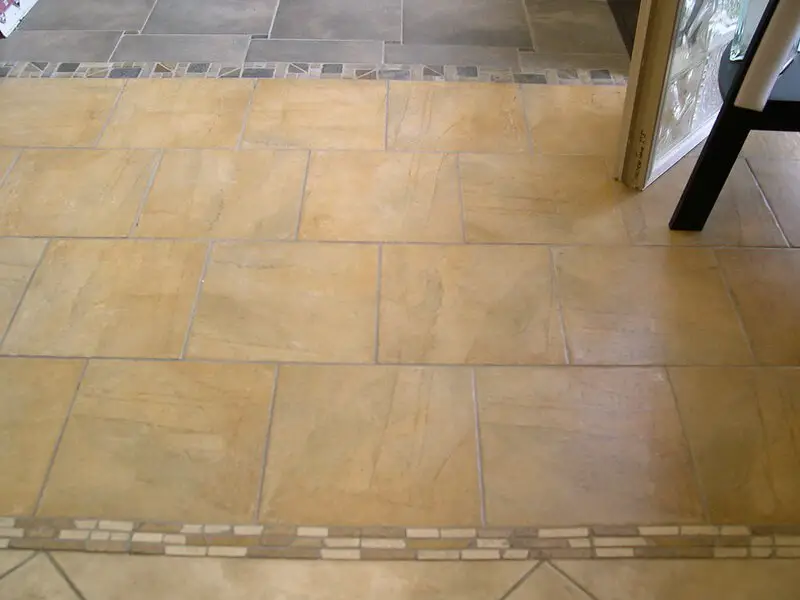
Ceramic and porcelain tiles have become a staple in modern homes due to their versatility and ease of maintenance. While they may not be entirely scratch- or dent-free, they offer an affordable alternative to more expensive flooring options like hardwoods. The range of designs available means you can find a style that suits your taste, from simple and understated to bold and eye-catching.
On the practical side, ceramic tiles are easy to clean with just a mop or cloth, making them a low-maintenance option. However, it’s worth noting that the labor costs associated with installation, including grout and adhesive, can be a drawback. Nevertheless, with prices ranging from half a dollar to $2 per tile, they remain an attractive choice for many homeowners. While not perfect, ceramic tiles offer a durable and long-lasting solution that can withstand the wear and tear of daily life.
Stone

When it comes to home renovations, stone floorings are a popular choice for outdoor spaces like patios, garages, and walkways. One of their biggest advantages is the low maintenance required – just occasional scrubbing and watering to keep them looking their best. This durability also means they can withstand heavy foot traffic without showing signs of wear and tear, and will maintain their classic look for many years to come.
Stone floorings are particularly well-suited to high-traffic areas because they don’t accumulate dirt and dust like other materials might. Additionally, their natural, earthy appearance makes them a versatile choice that can be used as an accent to complement other flooring types. However, it’s worth noting that stone floorings do come with some drawbacks – the different types of stone have varying levels of porosity, which can affect their performance and maintenance needs.
Despite these considerations, stone floorings are a great choice for homeowners looking to add value and character to their homes. The pros include their durability on high-traffic locations, natural good looks, resistance to dirt and dust buildup, and the fact that they can boost your home’s resale value.
Polished Concrete

Polished concrete slabs have been a staple in various settings for centuries, from basements to patios and garages. Beyond their aesthetic appeal, they also boast exceptional durability when properly maintained. Installation costs typically range from $2 to $20 per square foot, depending on the design’s complexity. This versatile flooring option excels in high-traffic areas, where it can withstand heavy usage without compromising its integrity.
Its low maintenance requirements and ease of cleaning make it an attractive choice for many. While polished concrete may be susceptible to moisture damage, its resilience to wear and traffic generally offsets this limitation.
The advantages of polished concrete include its remarkable durability and longevity, high-traffic resistance, low maintenance needs, and affordability.
Additionally, this flooring material is shock-resistant, eliminates the need for harmful chemical gases, and is an eco-friendly option. However, some drawbacks to consider are the hard and cold surface, vulnerability to moisture damage, and tendency to produce a loud sound when walked upon.
Rigid core
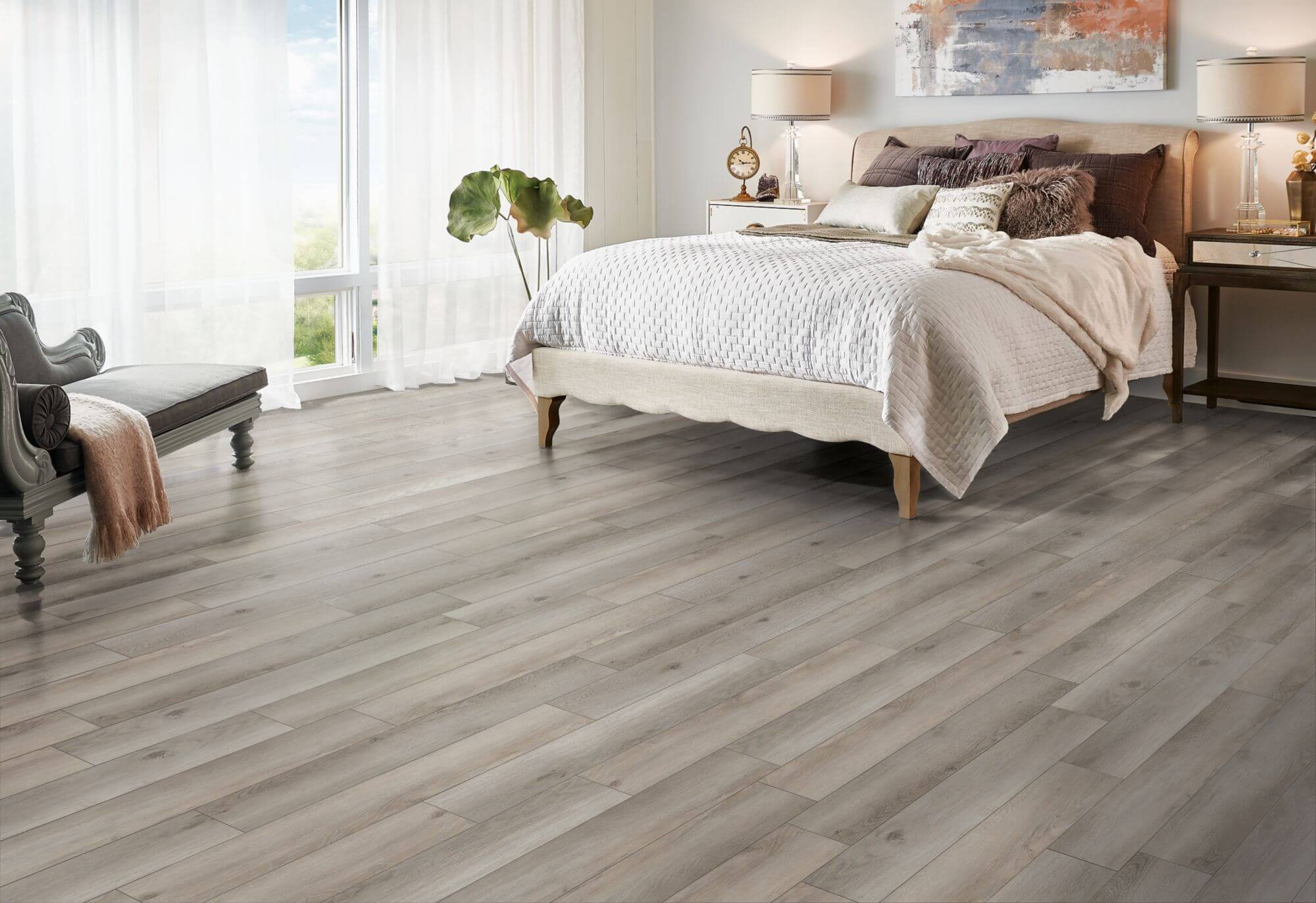
This engineered vinyl flooring is essentially an upgraded version of traditional vinyl flooring. Its core layer, comprising limestone powder, stabilizers, and polyvinyl, boasts enhanced stability compared to standard vinyl bases. The major advancements in this type of flooring include the introduction of a more durable underpad for noise reduction and added cushioning, as well as a wear-resistant layer for scratch protection and an SPC layer for waterproof properties.
This results in a flooring solution that outperforms its traditional counterparts in terms of durability. The benefits of this engineered vinyl flooring are numerous. Its water-resistance makes it an ideal choice for kitchens, basements, and bathrooms, while its ease of installation, stylish design, and affordable price point make it a practical option for many homeowners. Additionally, the added comfort and support provided by the underpad ensure that the flooring is comfortable to walk on.
However, it’s worth noting that this engineered vinyl flooring does come with some drawbacks. Notably, it tends to be more expensive than traditional vinyl options, which may be a deterrent for those on a budget. Furthermore, its manufacturing process is not as environmentally friendly as some might hope, making it less appealing to eco-conscious consumers.
Flooring Considerations
When selecting a flooring type, it’s essential to consider several factors beyond your personal preferences. These elements can have a significant impact on the overall outcome and may require careful evaluation. Some crucial considerations include:
Space function
When selecting flooring, it’s essential to consider where it will be installed and how it will be used. High-traffic areas require durable materials that can withstand constant wear and tear, such as ceramic tiles. In spaces prone to spills, like kitchens or playrooms, tiles, vinyl, or finished and sealed wood are ideal because they’re easy to clean. For outdoor spaces, waterproof options like vinyl or stained concrete are the way to go.
Ultimately, understanding how your flooring will be used is crucial in making an informed decision.
Repair and maintenance
When considering flooring options, it’s essential to think about the level of care required to keep them looking their best. Some types of flooring demand a significant amount of time and resources, including annual sealing or sanding, regular vacuuming or mopping, and more. If you’re short on time or concerned about the long-term costs associated with maintenance, it’s crucial to choose a flooring option that will be cost-effective in terms of repairs and annual upkeep.
For instance, if you don’t select the right flooring choice, labor costs for maintenance could be triple the initial installation cost. By considering these factors upfront, you can make an informed decision that will save you time and money in the long run.
Durability and service life
While hardwood floors are renowned for their exceptional durability, with a lifespan of 25 years, other flooring types like Terrazzo and teak can last up to 20 years. Vinyl and ceramic tile typically endure for around 15 years, while carpeted floors may only last 10 years. However, it’s essential to note that these estimates are subject to change based on the specific circumstances of a given space.
Proper maintenance is crucial to extending the life of any flooring type, as neglect can lead to wear and tear. Additionally, factors like chemical compounds present in the floor itself or surrounding environment may also impact its longevity, making it necessary to be mindful of these variables when evaluating the overall durability of your floors.
Cost
While cost is undoubtedly an essential aspect of deciding on flooring, it’s crucial to consider that investing in floorings can be a gamble. A high-end option may not necessarily guarantee longevity, just as a budget-friendly one may not mean it will deteriorate quickly. To make an informed decision, it’s vital to take into account the three factors mentioned earlier: durability, maintenance, and style.
Color and style
When selecting a flooring type, many people’s first consideration is aesthetics. Fortunately, there are countless color and style options available, allowing for ample experimentation to find the perfect match for each room. However, it’s crucial to remember that visual appeal isn’t the only factor at play. The chosen flooring must also complement the room’s design and function.
To achieve this, homeowners should be prepared to spend time narrowing down their options and considering factors such as foot traffic levels in different areas of the house. Moreover, it’s not necessary to install a single type of flooring throughout the entire home; instead, each room can have its own unique flooring that suits its specific needs.
Where to buy home flooring
When it’s time to start shopping for new flooring or simply browsing for inspiration, it’s essential to explore both brick-and-mortar and online retailers that deliver nationwide. With that in mind, here are some top stores to consider: Lowe’s, Home Depot, Floors USA, Flooring Liquidators, Floors Unlimited, Great Floors, Floors To Your Home, Wayfair, Build Direct, and Overstock. For those seeking the best flooring stores by state, House Beautiful provides a comprehensive guide.
However, it’s also important to note that reputable online retailers offer competitive pricing and convenient shipping options. Consider weighing the pros and cons of each option to find the best deal for your needs.
FAQs about types of flooring
When selecting a floor type, it’s crucial to consider various factors beyond just the type of flooring itself. To ensure you make an informed decision, here are some key considerations and frequently asked questions to keep in mind:
What is the most durable type of flooring?
When evaluating the durability of flooring types, six options emerged as particularly resilient: hardwood, laminated, cork, bamboo, vinyl, and tile. Of these, tile stands out as the most durable due to its inherent resistance to dents, scratches, and moisture damage. Unlike wood floorings, tile is less susceptible to wear and tear, making it a low-maintenance option.
While all flooring types have their vulnerabilities – hardwood is prone to moisture, laminated, bamboo, cork, and vinyl are more likely to show scratches or dents – ceramic tile’s durability sets it apart from the rest.
What is the least expensive flooring?
When it comes to finding budget-friendly floorings that can seamlessly integrate into any room in the home, consider laminate, vinyl, cork, ceramic tile, and linoleum flooring options. Of these, vinyl flooring tends to be the most affordable, followed closely by laminate.
Vinyl strips start at just 50 cents per square foot, with planks beginning at $2 and sheets starting at $3. In comparison, laminated flooring begins at $2 and typically caps out at $8 per square foot.
It’s worth noting that some flooring types may also be available for as little as half a dollar per square foot, but these options often require labor costs for installation – think ceramic tiles or polished concrete – which can add to the overall price tag.
What is the latest trend in flooring?
In recent years, modern home design has given rise to a variety of flooring trends. Among the most popular options are wood-like tile flooring, which mimics the natural beauty of wood, as well as marble-look porcelain tiles and granite tiles that bring a touch of luxury to any room. Vinyl plank flooring, designed with waterproofing in mind, is another top choice for those who prioritize practicality.
Additionally, terrazzo, graphic tiles, and slip-resistant tile flooring offer unique design opportunities, while stained concrete provides a modern industrial look. Re-engineered wood options have also gained popularity, offering the classic charm of real wood with improved durability. Interestingly, just as fashion trends come and go, so too do flooring fads. This year’s hot colors include light brown and pale wood tones, which evoke a sense of warmth and coziness.
Cooler tones like those found in granite tiles and marble tiles are also trending upwards, while classic dark hardwoods remain timeless favorites. Of course, some styles – such as ceramic tiles and wooden planks – have stood the test of time and continue to be popular choices, regardless of the year.
What is the best low maintenance flooring?
Low-maintenance flooring options are designed for busy homes, requiring minimal upkeep and withstanding moderate to high foot traffic without compromising on durability. Among the top performers in this category are vinyl tiles, engineered hardwood, and ceramic tile. Of these three, ceramic tile stands out as the most budget-friendly option when it comes to maintenance. One of its greatest advantages is ease of cleaning.
Unlike other flooring types that demand specialized cleaning products, ceramic tiles can be simply mopped with water and a broom, effectively removing dirt and dust that tends to accumulate in the grout lines.
What color flooring hides dirt?
The effectiveness of dark-colored flooring in concealing dirt largely depends on the type of material used. While a darker hue may initially suggest that dirt won’t be as noticeable, it’s crucial to remember that dust and debris can still accumulate and become visible over time. Regular cleaning is still essential for maintaining a clean home. In terms of specific materials, medium-toned colors between lightest and darkest shades often do an excellent job of hiding dirt on wood and vinyl floors.
For hardwood flooring, including engineered wood options, a satin finish is ideal for minimizing the visibility of dust and dirt. When it comes to tiles, those with colored or patterned designs tend to be more effective at concealing dirt.
What type of flooring is best for dogs?
When it comes to selecting the ideal flooring for homes with canine companions, vinyl is often touted as the top pick. This affordable option boasts a range of benefits that make it paw-fectly suitable for active pets like dogs. Not only is vinyl cheaper than many other options, but it’s also waterproof, resistant to dents and scratches, and stain-proof – making it a breeze to maintain. Additionally, it provides comfortable surfaces for your furry friends’ paws.
While vinyl may take the top spot, ceramic tile and engineered hardwood floors are strong runners-up when it comes to durability. However, it’s worth noting that hardwood floors can be vulnerable to damage from dog nail scratches. As for carpets, they’re unfortunately not a viable option when you have dogs in the house.
What is the best type of flooring for the kitchen?
When it comes to choosing a kitchen flooring solution, it’s essential to consider both low-traffic and high-traffic areas. To cater to these varying demands, opt for versatile options that can withstand foot traffic without denting or scratching easily. Among the most practical and affordable choices are cork, ceramic tile, laminate, and vinyl floorings. These options not only offer a range of styles, colors, and patterns but also boast exceptional durability and resilience.
Furthermore, polished concrete and stone tiles make excellent selections for outdoor kitchens or those with a more rugged aesthetic. While these choices may seem like a compromise on style, they ultimately provide a cost-effective solution that won’t break the bank. For cooks who take pride in their kitchen space, it’s crucial to consider the impact of flooring on workflow and overall cooking experience.
Conclusion
When it comes to building or renovating a home, selecting the perfect flooring is an integral part of the process. Flooring has the power to shape the ambiance and character of a space, making it a crucial consideration. Moreover, choosing the right flooring involves more than just aesthetics; it also requires careful consideration of practicality, maintenance, and budgetary constraints.
A well-planned flooring choice can make all the difference in creating a comfortable, functional, and beautiful living space that meets your unique needs and lifestyle. This post aims to provide valuable insights and guidance to help you navigate the process of selecting the ideal flooring for your home.
Related Posts
When it comes to home improvement projects, one question often arises: do you tip floor installers? Understanding gratuity etiquette is crucial for maintaining a positive relationship with professionals who work in your home. In fact, knowing when and how much to tip can be the key to ensuring a smooth and stress-free experience. For those looking to become flooring installers themselves, it’s essential to understand the career path and requirements involved.
From obtaining necessary certifications to developing hands-on skills, this career guide will walk you through every step of becoming a successful professional in the field. When designing a new home, choosing the right color walls that complement grey floors can be a daunting task. But fear not! With expert tips and advice, you’ll learn how to create a cohesive design that flows seamlessly throughout your living space.

